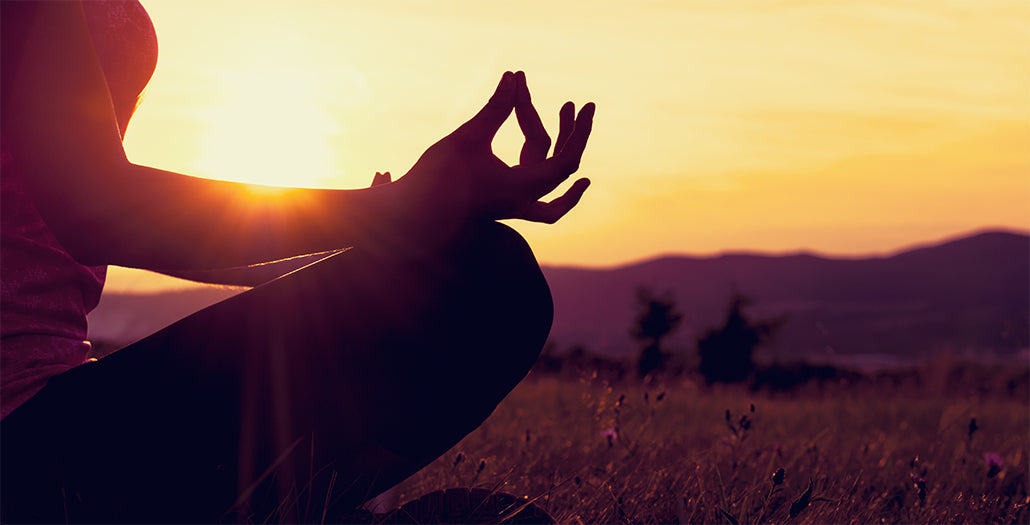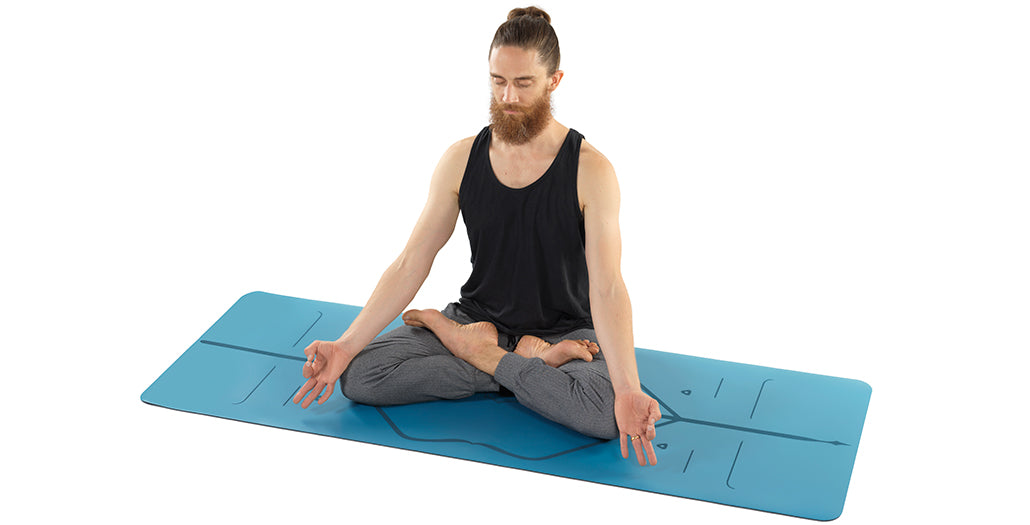The Yoga Sutras of Patanjali is often cited as the philosophical counterpart to today’s physical yoga practices. The implication is that the two were passed down together through the ages hand in hand, but it won’t surprise anyone who has researched the history of yoga asana to find out that that’s not really the case.
Just as most of the yoga poses we routinely practice date back no further than the last century, the yoking of hatha yoga and Patanjali’s famous text is also a relatively recent phenomenon. However, this revelation doesn’t mean that these two things don’t work well together in the present. By delving into what we do know about the history of the Yoga Sutras, we can learn a lot about how yoga was introduced to the Western world.
David Gordon White’s excellent book The Yoga Sutra of Patanjali: A Biography (2014) is a deep dive on this subject and, except where otherwise noted, the primary source for the following information. Barbara Stoler Miller’s Yoga: Discipline of Freedom (1996) is White’s preferred Yoga Sutras translation and commentary and provides another invaluable reference.

Patanjali Basics
We don’t have that much information about the actual Patanjali. Scholars date his lifetime to some time in the first through fourth centuries of the Common Era. He wrote the sutras in what is called 'Buddhist Hybrid Sanskrit', rather than classical Sanskrit, which may indicate a Buddhist influence in the work.
The author of the Yoga Sutras was probably not a half-man, half-multi-headed serpent. That was a different Patanjali, a mythical god, however, the two have been conflated at times, including in the opening invocations used in both Iyengar and Ashtanga practices.

Interpreting the Yoga Sutras
The Yoga Sutras (which means strings) are 195 aphorisms about a philosophy that was called Yoga at the time. It’s important to note that the word ‘Yoga’ has been used for multiple purposes in different contexts and historical settings and has a variety of meanings in Sanskrit. It’s most common contemporary definition, union, is only one possibility.
The Yoga of Patanjali is more aptly translated as concentration or, as Barbara Stoler Miller does, discipline. As a philosophy, Yoga examines the human spirit’s relationship to the material world and how the spirit might be freed from suffering through discipline and introspection. It has very little to say about postural practice, as we will see.
The sutras are dense and abstruse, both in their language and their content, so they are most often accompanied by an explanatory commentary. This was true even in ancient times. The first commentary, credited to Vyasa (which means editor), was possibly written by a near-contemporary of Patanjali, suggesting that his verses were not a lot clearer to readers in his own time than they are now.
Vyasa’s interpretation introduces some vocabulary and themes that are not present in the original work, in particular, several that pertain to a closely related philosophical system of the day, Samkhya. This commentary has had a strong and lasting effect on the interpretation of the Yoga Sutras up to the present day.
Yoga and Samkhya
Samkhya and Yoga are both Dualistic systems that recognize a difference between Spirit (Purusha) and Matter (Prakriti). Salvation, which is the goal of both systems, is achieved when a person is freed from the cycle of death and rebirth by the realization that their Spirit is pure consciousness and therefore not tethered to the material world. In Samkhya, this is achieved through a process of rational inquiry into the nature of matter, while in Yoga the same result is reached through deep meditation.
Patanjali’s Yoga is referred to in some ancient texts as 'Samkhya with Ishvara'. Like many Sanskrit terms in the Yoga Sutras, the word Ishvara can be interpreted in several ways. It could mean God or it could mean a master or expert teacher. In the Yogic system, dedication to Ishvara is one of the preconditions to liberation, while in Samkhya it is not.
Perhaps the biggest misconception about Patanjali’s work is that it provides guidance for achieving union with the divine in order to reach a place of enlightenment. In his biography, David Gordon White explains that both Yoga and Samkhya actually propose absolute separation between Spirit and Matter as the state that will provide freedom from suffering. The enduring perception that union is yoga’s highest state was introduced via influential commentaries on the Yoga Sutras much later.

Patanjali’s 8 Limbs
Patanjali’s explanation of an eight-limbed (the Sanskrit word is ashtanga, from which the yoga style of Sri K. Pattabhi Jois takes its name) path is the part of the Yoga Sutras that is most prevalent in modern practice. The description of the eight limbs is a very small section, comprising just 31 out of the 195 verses. In ancient times, this portion was considered the least significant part of the work. It is perhaps the very practicality and explication of a route that leads toward liberation from life’s inherent suffering within this otherwise very dense philosophical text that appeals to modern practitioners.
The first two limbs outline moral principles and observances that prepare a practitioner for the profound inner work to come. The next three limbs are quite practical in nature: sit, breathe, withdraw from sensory stimulation. One of these practical limbs is asana, which in this context simply meant posture. The only sutra that directly refers to asana is ‘sthira sukham asanam’, which Miller translates as ‘The posture of yoga is steady and easy’. In order to enter into meditation, it is necessary to assume a posture that is easy to maintain.
The final three limbs describe a deepening meditative state, culminating in samadhi (pure contemplation), in which the person becomes one with the object of their meditation. This is the goal of the eight limbs, however, this is actually not the end of the process of transformation. Patanjali describes a further state, nirbija-samadhi, which Miller translates as ‘seedless contemplation’. This is the complete separation of Spirit and Matter, which results in the liberation of the Spirit.
Once freed, the Spirit has the power to extend everywhere, giving it what we would call supernatural powers, such as invisibility, the ability to enter other bodies and travel through time and space. When the complete separation of Purusha and Prakriti is realised, the spirit transcends the material world.

Sutras Timeline
Patanjali’s work enjoyed some popularity around the time of its creation and again in the 10th and 11th centuries, as evidenced by the existence of translations from that time into two other ancient languages for broader dissemination. However, by around 1200 CE, the Yoga Sutras had fallen out of common use, only to be rediscovered in the early 1800s.
White explains that, in an attempt to codify a traditional Hindu set of laws so that they could be applied to the indigenous population, the British colonial government in India fostered a surge of Sanskrit scholarship. This led to a rediscovery of Patanjali’s work, which then came to be embraced and promoted by two influential voices in the adoption of yoga in the West: The Theosophical Society of Madame Blavatsky and Swami Vivekananda.
The Theosophical Society, whose members viewed India as the original source of human spirituality, published several of the earliest English language translations of the Yoga Sutras, beginning in 1885, with the aim of popularizing the ancient wisdom of Indian mysticism. Their translations allowed Patanjali’s work to reach a much wider audience.
Vivekananda, who played a dominant role in advancing the interest in Indian philosophy and yoga in the United States around the turn of the 20th century, also did much to make the Yoga Sutras more available. In 1896, he published Raja Yoga, which became hugely popular and soon gained an international readership. The book is divided into two parts, the first being transcriptions of Vivekananda’s lectures on the subject of the eight-part practice and the second a translation and commentary of the full Yoga Sutras.
It is through Vivekananda’s lens that many of our contemporary misconceptions about the Yoga Sutras are filtered, because the Swami had an agenda to further with his intended audience, namely to establish Indian thought as the primary source for Western philosophy, science, and spirituality. Vivekananda made this esoteric work more accessible, but, as White writes, he may have ‘succeeded at the expense of accuracy’. For instance, Vivekananda’s commentary also includes the nadis and chakras (from Tantra Yoga) as well as pranayama and kundalini practices (from Tantra, Hatha, and the Puranas).
Given this context, it is not surprising that Patanjali’s work is now associated with many concepts popular in modern yoga that are, in fact, not present in the original work. In particular, the idea that the culmination of the eight-part practice results in union with the divine is a concept from the Puranas, not the Yoga Sutras. Although Vivekananda was not the first to introduce these inconsistencies into his interpretation of the Yoga Sutras, the success of his version ensured that they have endured.
The Yoga Sutras in Modern Yoga
The marriage of Patanjali’s work of philosophy with asana can be traced to T. Krishnamacharya (1888-1989), who has been called the father of modern yoga. Krishnamacharya’s legacy has been profound, as he was the teacher of three of contemporary yoga’s most prominent disseminators: Ashtanga Yoga founder Pattabhi Jois, B.K.S. Iyengar, and Krishnamacharya’s own son, T.K.V. Desikachar, who founded Viniyoga. Indra Devi, who brought yoga to Hollywood, was another notable student.
The story of Krishnamacharya’s life has been at least somewhat mythologized. He professed to have received his hatha yoga training while living in a cave in Tibet (or Nepal) for seven years with his guru and also through an ancient book called the Yoga Korunta, which he personally discovered in a library in Calcutta and that was later mysteriously eaten by ants. In his book Yoga Body, Mark Singleton's research reveals that vinyasa yoga's emergence was also heavily indebted to the 19th century's international physical culture movement and the British colonial military's callisthentics routines.
As to Krishnamacharya’s later introduction of the Yoga Sutras of Patanjali as the philosophical underpinning of this new type of yoga, Singleton suggests that it was a pragmatic way to legitimize vinyasa practice by linking it to a more ancient Indian tradition. Thanks to Vivekananda’s Raja Yoga, the Yoga Sutras could be counted on to bestow an aura of authenticity, not to mention science, health, and spirituality, to this burgeoning style of asana.
Other yoga styles that were developing concurrently with the Krishnamacharya lineage likewise seem to have applied the Yoga Sutras retroactively. Swami Sivananda, for instance, mentions Patanjali only in passing in his early writing. However, Sivananda’s disciples, notably Integral Yoga founder Swami Satchidinanada, later fully incorporated the Yoga Sutras into their teaching.
The Yoga Sutras Today
Knowing more about how and why yoga developed the way it did doesn’t discredit a contemporary version of the teachings. The interpretation of philosophy, just like asana, must be allowed to evolve to suit the modern yogi or else it will become obsolete.

Perhaps the best known of the sutras is the second one: yoga citta vritti nirodha. While each of these words has a number of possible translations, Miller’s is ‘Yoga is the cessation of the turnings of thought’. Although Patanjali was almost certainly not talking about the effects of the physical practice as we know it, this definition is a very apt description of the effect yoga asana has on the mind. Perhaps the Yoga Sutras continue to be taught today because they continue to resonate with us, regardless of their indirect route to the mat.
For much more information, check out these sources:
Miller, Barbara Stoler. Yoga: Discipline of Freedom: The Yoga Sutra Attributed to Patanjali. University of California Press, 1996.
Singleton, Mark. Yoga Body: The Origins of Modern Posture Practice. Oxford University Press, 2010.
White, David Gordon. The Yoga Sutra of Patanjali: A Biography. Princeton University Press, 2014.





































